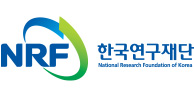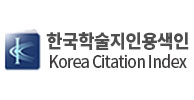Chapter 1: General Provisions
Article 1 (Purpose)
The purpose of this regulation is to define the matters related to the submission of the journal “Intelligent Information Convergence and Future Education” (hereinafter referred to as the journal) published by the Intelligent Software Education Research Institute at Jeju National University (hereinafter referred to as the Institute).
Article 2 (Scope and Field)
1. Papers submitted to the Intelligent Information Convergence and Future Education (hereinafter referred to as the "Journal") must relate to education, convergence education, computer science technology, contributing to the advancement of both academia and related industries through originality.
2. Submissions that have been published in other domestic or international journals are not eligible for submission.
Article 3 (Submission of Manuscripts and Eligibility Requirements)
1. Manuscripts must be submitted through the online submission system, and all related processes such as peer review and final manuscript submission shall also be conducted through the online system. However, if the online system is difficult to use, such as for overseas authors, the Editorial Board (hereinafter referred to as the "Board") may authorize the Editorial Office to process the submission.
2. The primary author and co-authors must be members of the journal through registration in the online submission system. However, non-members may submit manuscripts if approved by the Board.
Article 4 (Responsibility)
The final responsibility for the content of published papers rests with the author.
Article 5 (Research Ethics and Reflection of Gender Innovation Policy)
Papers published in the Journal must comply with the research ethics regulations of the Institute and adhere to the guidelines recommended by the Gender Innovation Policy (http://gister.re.kr/).
1. Submitted papers must clearly distinguish between sex (biological differences) and gender (identity or cultural distinctions).
2. Submitted papers must report the sex, gender, or both of research participants, including the sex of animals or cells, and describe the methods used to determine sex and gender.
3. If the research content focuses on one sex or gender, the author must reasonably explain the rationale for this focus within the manuscript, except in clearly justified cases.
4. Authors must describe the methods used to determine race or ethnicity and explain the research necessity for these distinctions.
Article 6 (Use of Terminology)
Manuscripts should be written in either Korean or English. The original language may be indicate in ( ) only if there is a possibility of interchangeability in meaning.
Article 7 (Use of Format)
Manuscripts must be prepared using the format provided by the Institute. Manuscripts that do not adhere to the Journal's formatting guidelines may be returned for revision or rejected as "unpublishable".
Article 8 (Copyright Transfer and Compliance with Manuscript Submission Ethics)
1. When submitting a manuscript, authors must attach a copyright transfer agreement and a manuscript submission ethics pledge, both of which should include the personal information and copyright transfer consent(assignment) of all authors, using the Korean·English forms provided by the Journal.
2. Copyright is transferred to the Journal on the date of the manuscript's acceptance for publication.
Chapter 2: Similarity Checking Composition of Submitted Manuscripts
Article 9 (Similarity Checks of Manuscripts)
1. authors should use the paper similarity checker program to check the similarity for copyright, plagiarism prevention and protection.
2. The standard for checking plagiarism in a paper is recommended to be an average similarity rate of 15% or less based on the similarity check criteria of the KCI literature similarity check service.
3. Authors should conduct similarity checks on the initial submission, revised version, and final version of the paper.
Article 10 (Structure of Manuscripts)
Manuscripts should be structured according to the format provided on the Institute's website and should be composed in the following order:
1. The manuscript should be organized in the following sequence: Korean title, English title, Korean author names, English author names, Korean abstract, Korean keywords, English abstract, English keywords, main text, references, and appendices. However, in the case of English manuscripts, Korean-related content may be omitted.
2. The title should comprehensively reflect the content of the manuscript, and the abstract should clearly state the research objectives, proposed methods, results, and conclusions, within approximately 500 characters.
3. The manuscript submitted for review must exclude author information to ensure anonymity. Author names, affiliations, and positions should be provided in the final manuscript submission. If any author is a minor, their final affiliation, position, and academic year must be indicated.
4. To internationalize the journal and improve the transparency and reliability of research, we recommend that authors enter their ORCID(Open Researcher and Contributor ID).
Article 11 (Reference Citation and Notation)
References should be limited to those cited or mentioned in the text and must adhere to the following guidelines:
1. References should be listed in English, and if the original reference does not provide English names or titles, they should be translated into English with the original text provided in parentheses.
2. References should be listed in the order in which they are cited in the text.
3. In-text citations should be indicated with brackets [ ] corresponding to the reference number, e.g., [1-3], [1, 3, 4].
4. To enhance accuracy, Digital Object Identifiers (DOIs) should be included for cited papers, where available.
5. If citing a paper authored by the same author as the submitted manuscript, the citation should be indicated by number, and the reference list should only display the number with detailed information redacted.
[12] ---, -. (2020). -----
6. References should follow the examples provided below, with additional examples and formatting guidelines available in the format file. If an example is not provided, APA style should be followed.
Examples:
① Journal Article: Author(s). (Year). Title. Journal Name, Volume(Issue), Page numbers. DOI
[1] Lee, E. (2020). A Comparative Analysis of Contents Related to Artificial Intelligence in National and International K-12 Curriculum. Intelligent Information Convergence and Future Education, 23(1), 37-44. https://doi.org/10.32431/kace.2020.23.1.003]
[2] Kim, S., & Kim, S. (2020). Development of Game Developer Career Experience Program using Scratch. Intelligent Information Convergence and Future Education, 23(1), 45-52. https://doi.org/10.32431/kace.2020.23.1.004
② Book: Author(s). (Year). Title. Publisher. DOI
[3] Cho, J. (2020). Educational Science Research for AI. Halstead. https://doi.org/10.12345/abcd.2020.01.1.001
[4] Ko, J. & Park, C. (2020). Computer Education. Ara Publishing Co. https://doi.org/10.12345/abcd.2020.01.1.001
③ Conference Paper: Author(s). (Year). Title. Proceedings Name, City, Country, Volume(Issue), Page numbers. DOI
[5] Wollowski, M., Selkowitz, R., Brown, L., Goel, A., Luger, G., Marshall, J., Neel, A., Neller, T., & Norvig, P. (2016). A Survey of Current Practice and Teaching of AI. Proceedings of the AAAI Conference on Artificial Intelligence, 30(1), 4119-4124. https://doi.org/10.1609/aaai.v30i1.9857
④ Dissertation: Author. (Year). Title (ID) [Degree, Institution]. Source
[6] Abdelzaher, Ann M. (2009). Faculty perceptions of teaching in undergraduate computer science education (Publication No. 3400902) [Doctoral dissertation, University of Virginia]. ProQuest Dissertations & Theses Global.
Article 12 (Numbering System)
Headings should be numbered in the order of 1., 1.1, 1.1.1, 1), A), (1), (A),ᅠetc.
Article 13 (Figures and Tables)
Figures and tables should be captioned and formatted in English according to the following guidelines:
1. Figure captions should be centered below the figure as "Figure 1. Title of figure," and table captions should be centered above the table as "Table 1. Title of Table."
2. All text within figures and tables should be in English. If this is not feasible, a brief English explanation should be provided beneath the figure or table.
3. Figures must have a resolution of at least 300 dpi.
Article 14 (Acknowledgments)
Acknowledgments for theses, conference papers, research reports, or research-funded papers should be noted in a footnote on the first page. However, in the case of review submissions, any identifying author information should be redacted with a dash (-).
1. For theses:
"This paper is a revised and supplemented version of the first author's [degree] thesis.""This paper is an excerpt and summary of the [degree] thesis submitted to [University], Graduate School of [Department]."
2. For conference papers:
"This paper is a revised and supplemented version of a paper presented at the [conference name] in [year].""This paper is an extended version of a paper presented at the [conference name] in [year] under the title '[title of the conference paper].'"
3. For research-funded papers:
"This research was supported by the Ministry of Education and the National Research Foundation of Korea (NRF-00) in [year].""This research was supported by a research grant from [University] in [year]."
4. For reports:
"This paper is based on the contents of a report from [year] by the [Institute name] (IP2020-00)."
(If the report submission institution has its own regulations, those regulations take precedence.)
Chapter 3: Regulations Regarding Fees and Final Manuscripts
Article 15 (Submission and Publication Fees)
In order to promote research in the fields of intelligent information, intelligent information convergence, and future education, the submission for newly reviewed articles are free of charge. However, separate submission fees are paid in the following cases:
1. In the case of resubmitting a paper that were previously rejected, notify the editorial office and pay a submission fee of 100,000 KRW.
2. For urgent submitted papers, a submission fee of 200,000 KRW is paid for urgent review, taking into account all matters such as adjustment of the review schedule (payment to the institute account).
3. The author of an accepted paper must pay the following publication fee according to the number of pages published when the paper is notified of the paper's publication confirmation.
| Number of Pages |
Up to 8 pages |
9 pages or more |
| Publication Fee |
250,000 KRW |
Additional 30,000 KRW per page |
4. In the case of papers supported by research funds, an additional 150,000 KRW must be paid along with the calculated publication fee (payment to the institute account).
5. In order to promote research in the fields of intelligent information, intelligent information convergence, and future education, the publication fee for papers may be discounted, and details will be announced separately on the journal homepage.
Article 16 (Request for Adjusting Publication Date)
If an author wishes to adjust the publication schedule of an accepted paper due to special circumstances, they may do so with the approval of the Editorial Board. However, the author must pay an additional fee of 200,000 KRW for adjusting the publication date.
Article 17 (Copyright of the Final Paper)
All copyrights related to the accepted paper shall be vested in the Institute, and the author retains the following rights:
1. The author may use portions of the paper in other works through citation.
2. The author and their affiliated institution may reprint the paper for internal use, provided it is not for commercial purposes.
3. If the research was funded by the government of the Republic of Korea or another institution, the Institute will be considered to have received the copyright from the government or institution free of charge.
Chapter 4: Supplementary Provisions
Article 18 (Detailed Rules of Operation)
1. Any matters not specified in these regulations shall be determined by the Editorial Board.
2. Detailed operational matters related to the application of these regulations may be separately established through meetings of the Editorial Board as necessary.
Supplementary Provisions
Article 1 (Effective Date)
These regulations shall take effect on date of promulgation.







